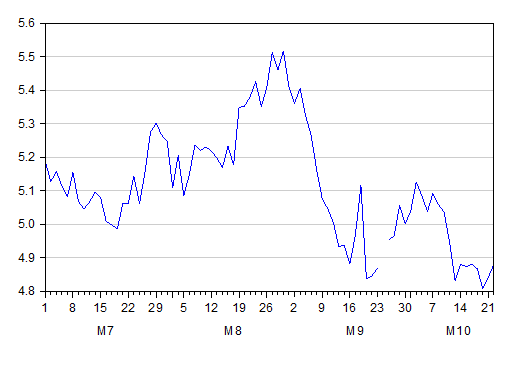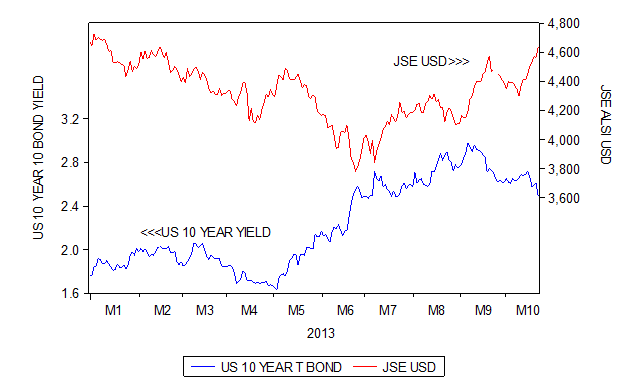The SA National Roads Agency (SANRAL) very clearly misjudged its pricing power when setting the original tolls for the Gauteng commuter belt. Toll road charging is as much about politics as economics, as the Agency now knows only too well.
But what are the economic principles that inform SANRAL tolls? I trawled through the SANRAL website for answers and find very little by way of guidance. How “the right price” for a new road to be built and tolled is determined appears to receive very little attention or analysis in the documentation presented to the SA public by SANRAL.
There are some clues that indicate the tolling pricing philosophy. SANRAL pays close attention to the volume of traffic on its roads. To quote its Strategy: “Traffic data forms the basis of planning in SANRAL. Because it is important for SANRAL to have accurate traffic data for the entire national road network, it is covered by strategically positioned traffic counters.” Source: SANRAL Strategic Plan
SANRAL is also naturally well aware of its credit ratings and the strength of its balance sheets. Debt management would appear to play an important role in its tolling determinations , according to its Strategy Document:
“SANRAL has historically sought to reduce its dependence on transfers from the fiscus, using the strength of its balance sheet to finance the toll road programme…….. to allow it to continue its borrowing programme efficiently to fund the toll roads. The aim is to maintain the credit ratings at sovereign equivalent levels at all times. But the recent uncertainty around the implementation of electronic tolling on the GFIP has caused nervousness among investors. The rating agency has placed SANRAL‟s ratings on review for a possible downgrade.”
Not all of the extensive road network, for which the agency is responsible, is suitable for tolling, due to the lack of sufficient traffic to cover even the costs of collecting the tolls. But the costs of maintaining and extending the road network are formidable and for meeting this responsibility, the revenue from tolls (where they do cover their costs of collection) are for SANRAL a more helpful alternative source of finance than grants from the National Treasury.
The Toll Budget proposed in 2012-13 illustrates the financial objectives for SANRAL, presuming it got its way with tolls. Income from tolls were proposed to increase from R3.69bn in 2012-13 to R6.34bn in 2014-15. Expenditure on operations was to rise much more slowly, from R2.42bn to 2.84bn over the same period. That is to say, operating profits would rise from R1.27bn in 2012-13 to R3.5bn in 2014-15.
This improvement would go some way to meeting the growing finance charges associated with a massive increase in capital expenditure on roads to be tolled, that occurred between 2008-9 and 2011-12, as well as the extra debt associated with this capital expenditure programme. Capex of R25.37bn was incurred over these years and funded largely with debt. This burst of capex on toll roads according to the Toll Budget will slow down to R2.24bn in 2012-13, R1.45bn in 2013-14 and R1.58bn in 2015-16. This mixture of rising operating profits and declining capex and debt issues would clearly improve the SANRAL balance sheet.
The strong indication is that, with these balance sheet objectives very much in mind, the guiding principle in determining the tolls charged is based largely upon what the expected, closely monitored, traffic will bear. In other words, the tolls are set to maximise revenue. The more traffic, the more essential the route to be travelled, the stronger the demand and so the higher the tolls, would seem to be the modus operandi. In other words the tolls are set independently of the costs of building and maintaining the roads, with the most popular routes producing the largest operating surpluses.
The transport engineers might call this a pure congestion charge. It is not a user charge system but a system for cross subsidising users.
It is good economics to apply user charges as an alternative to general taxation, from which the taxpayer may receive very little benefit. The Gauteng commuter, not the Cape Town commuter, should pay for Gauteng roads. Nor should the Cape Town or Gauteng motorist be expected to pay for the costs of using the little used road from Calvinia to Upington.
But then how much should the Gauteng commuter be expected to pay? Not surely as much as the Gauteng traffic could bear. Given the lack of alternative routes and transport this could be a very high price indeed – as SANRAL originally intended.
The right price for a new toll road would be a toll that could be expected to generate enough revenue and operating surplus to cover all costs of building the road, including the opportunity cost of the capital employed. It would be inflation protected. If, in applying this principle, the right price can be expected to be generated over the estimated life of the asset (say 20 years), providing revenues sufficient to cover all costs, including a (low) risk adjusted return on capital, then the road should be built. If this condition cannot be met, either the road should not be constructed at all, or some explicit subsidy from the taxpayer would have to be in the budget for the road, using the same pricing principles. This economically sensible “right price” for a new road, for which there would be good demand, as for example an improved Gauteng road network, would surely be far lower than a “what the traffic can bear” charge.
It is essentially this pricing principle that the energy regulator has used to determine the price that Eskom, with its monopoly power, is allowed to charge its customers. Nor did NERSA allow debt management considerations to influence its price determination. As with a new power station, a new road, bridge or flyover is fully justified when the price charged is sufficient to generate enough revenue to cover all costs and to provide an appropriate return on capital. And using debt to fund infrastructure also makes sense, providing the returns justify the capital expenditure. Debt management should not be allowed to influence prices.
Roads are highly productive. Building new roads or access to them can make every economic sense when the right price is charged to their users. An active road building programme for the SA economy is urgently called for, especially where demand for roads is most intense, as it is around Gauteng or Cape Town. Yet the right price to be charged to justify this programme should not be seen as a congestion charge designed to force the use of alternative transport – or as a way of cross subsidising the building of roads that cannot cover their costs.
It calls for a user charge sufficient to cover costs of building and maintaining roads, wherever possible and no more; or for an explicit subsidy that the tax payer will be called upon to supplement user charges when revenues from practically feasible user charges would fall short of the requirement to cover all costs.
These – economic return on capital – pricing principles have not guided SANRAL. That the originally intended Gauteng toll charges proved politically impossible has unfortunately made sensible toll charging of the right kind indicated less likely. It is likely to have a negative impact on productive road building in SA.














